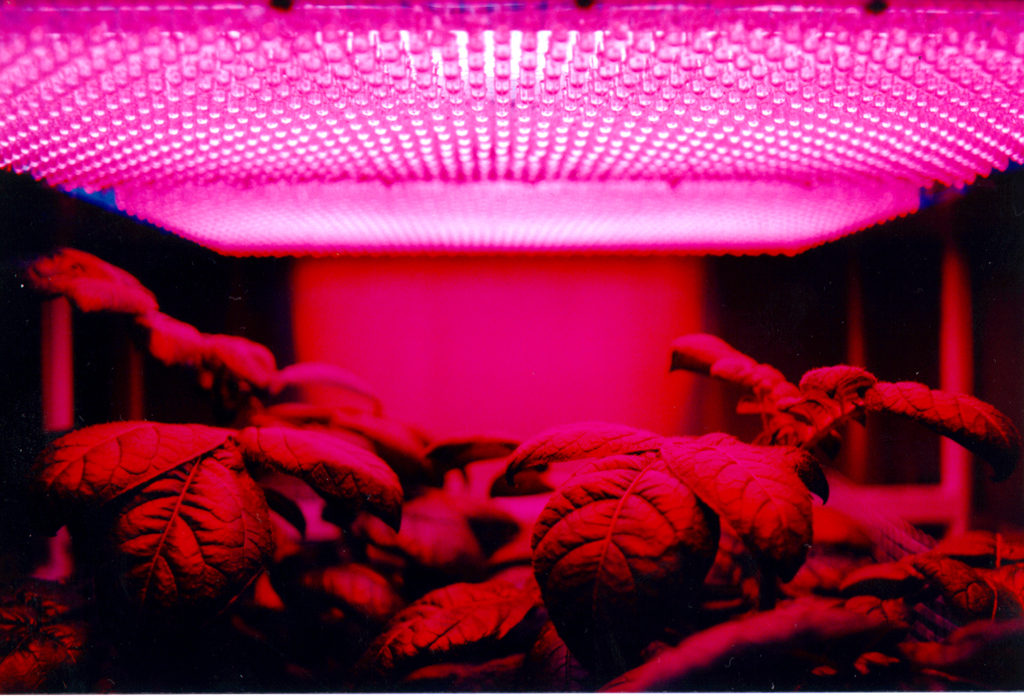Plants have five basic needs – food, water, air, light, and space. Outdoors, plants get everything they need from nature and some human intervention. However, when growing plants indoors, these five basic needs have to be provided artificially. Why would we want to grow plants indoors? The biggest reason is to be able to grow food all year, rather than only when the weather is good.
Light is especially challenging when growing plants indoors, because we do not have the benefit of the sun’s very intense natural light and providing artificial light can be expensive. Scientists who study indoor farming often get creative when it comes to providing light for their plants to learn ways of reducing costs, improving crops, or simply because it’s interesting! With the vast quantity of options for different types of lamps available, countless experiments can be performed that show which type of light is best or which yields the most interesting results.
A team of researchers in Lithuania decided to experiment with growing plants under different colors of light to see how it affected the nutrient content of the plants. They used parsley and basil microgreens for their study, which are the immature shoots of the parsley and basil plants, cut above the soil. Microgreens are sold as a gourmet cash crop by many up and coming growers. Microgreens are also great for research because they have very short life cycles, thus reducing waiting time for experiments to run.
These researchers grew microgreens under blue, red, and far red light to see if it would change the quantity of important antioxidants like phenols and anthocyanins, which give plants their red color, and beta-carotene, which gives plants their yellow and orange shades.
Why would scientists think this would happen in the first place? Previous research has shown that shining different colored lights on plants stresses them out. In response to that stress, their bodies produce greater amounts of these phenols, anthocyanins, and beta-carotenes mentioned above. They may look pretty and nourish humans, but their main purpose is to protect plant tissue from stress from UV light and other damaging environmental effects.
For both types of microgreens, beta-carotene increased when the plants were grown under red light alone and with red and blue together. For Vitamin E, red light alone and red with blue increased the levels by a large amount, but with basil those same light colors decreased the vitamin E compared to regular white light.
The charts shown here are only a small fraction of the data. The researchers measured different types of red light, five different nutrients, as well as a test for something called “antioxidant activity,” which shows how much stress the plants were under. They also showed that increasing the amount of light, not just changing the color, has an impact on nutrient levels. To view the full data, click here.
Chefs often love the bright colors of microgreens and will pay a premium for unique, attractive garnishes. Because these plant chemicals not only provide nutrition but also give plants their bright colors, growers may be able to change the grow light colors to grow more attractive products. Not to mention the added nutritional benefits that will be of interest to health-conscious customers.


